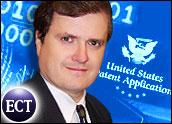
Tuesday at the U.S. Supreme Court, the justices heard arguments concerning a basic tenet of patent law. In addition to being new, any invention for patent must be deemed “nonobvious” over what is already known; i.e., the innovation must represent some technological advance — even if slight.
The case KSR v. Teleflex involves an innovation in automotive technology marketed by the patentee (Teleflex) to Ford and allegedly infringed by KSR. The crux of the arguments on appeal, however, is the legitimacy of a legal test for obviousness articulated by the Court of Appeals for the Federal Circuit, the one appellate court designed to hear all patent appeals.
Another important issue is whether that test comports with the prior case law or precedent of the Supreme Court.
Deepening Anxiety
Underlying the case are the growing tensions over the patent system. The Supreme Court has taken on numerous patent-related cases in the last year, and the patent bar expects some changes — albeit none drastic — from the Court. In KSR, it is likely that the Supreme Court will reverse the Federal Circuit, sending the case back to the trial court for further findings.
The obviousness test articulated by the Federal Circuit is the so-called teaching-suggestion-motivation (TSM) test developed over the last few decades to set forth guidelines for an obviousness analysis of patent claims, e.g., in obtaining a patent and in litigating one.
In short, the TSM inquiry looks to whether “a person of ordinary skill” in the technology or art, possessing and understanding the prior art of others in the technological area, and motivated by the general problem facing the inventor, would have made the advances recited in the patent.
An End to Mystery
This cumbersome definition also confused the justices on Tuesday. Since an obviousness analysis is relative to the works of others and the technological problems faced, a simple rule here is impossible.
A chief goal of the TSM test is to minimize and hopefully eliminate hindsight analysis by focusing application of the TSM factors at the time of invention and not later. Without some guidelines for structured analysis, everything can be considered as obvious in hindsight.
For example, the concept of zero was not understood by the Greeks and Romans, despite the readily apparent “obviousness” of the concept. Various modern innovations, also seeming patently obvious, likewise spring like Athena from the head of Zeus, defying established understanding and expectations.
How could they get a patent on that? Since obviousness is a subjective analysis, the TSM test, as well as the Supreme Court cases and statutes from which it is derived, tries to objectify the analysis, taking the mystery out of the equation.
Creeping Scientific Progress
KSR and its supporters argue that other, older Supreme Court precedents should hold sway, and what is needed is a return to “traditional” thinking on the subject. The rapid rise in nontraditional patenting, e.g., software and business methodologies, is seen as based on follow-on adaptations and permutations of what is known, as opposed to synergistic creation — the Eureka moment.
Requiring patents to embody only great advances, however, belies the vast majority of scientific progress, which is incremental or evolutionary, as opposed to the rarer revolutionary. Both types of innovations are of value to our economy — whether they lead to advances in software code or in pharmaceuticals.
Patentee Teleflex, as well as all professional organizations offering their viewpoints in this case, contends that the TSM test, as articulated by the Federal Circuit from Supreme Court and other precedents, supports the delicate balance of the interest of the inventors and the public.
In the oral argument, the issue of ramifications of removing the TSM test in favor of another one got considerable time, particularly since the threat of litigation of hundreds of thousands of suddenly “suspect” patents is anathema to the Court.
Nobody’s Perfect
On Tuesday, however, the justices seemed to have taken some of KSR’s arguments to heart. It is expected that in its opinion some months hence, the Court will permit lower courts to employ obviousness tests other than the TSM test in evaluating patented innovations.
Although the Federal Circuit has repeatedly stated that the TSM test is a flexible one and in full compliance with Supreme Court precedence, particularly of late, KSR stressed the perception that the Federal Circuit is somehow acting in a rogue manner, creating its own jurisprudence in defiance of the Supreme Court — a view not shared by the vast majority of professional organizations.
Thus, the finely honed TSM test will likely become a nonexclusive factor in the determination of obviousness while new factors are tested in turn.
Since the KSR case will soon return to the trial court, these additional obviousness tests will soon be employed, perhaps resurrecting some lines of thought from cases since the first Supreme Court obviousness case in 1851.
Although not perfect, the TSM test examines the invention as a whole in the context of the appropriate time (of invention) and balances the various interests at play. So long as the evils of hindsight analysis are avoided, and some suggestion and reasoning articulated when denying a patent on the grounds of obviousness, the public and innovation are served.
Raymond Van Dyke is a technology attorney and partner in a major Washington, D.C., law firm. He can be reached at[email protected].










































